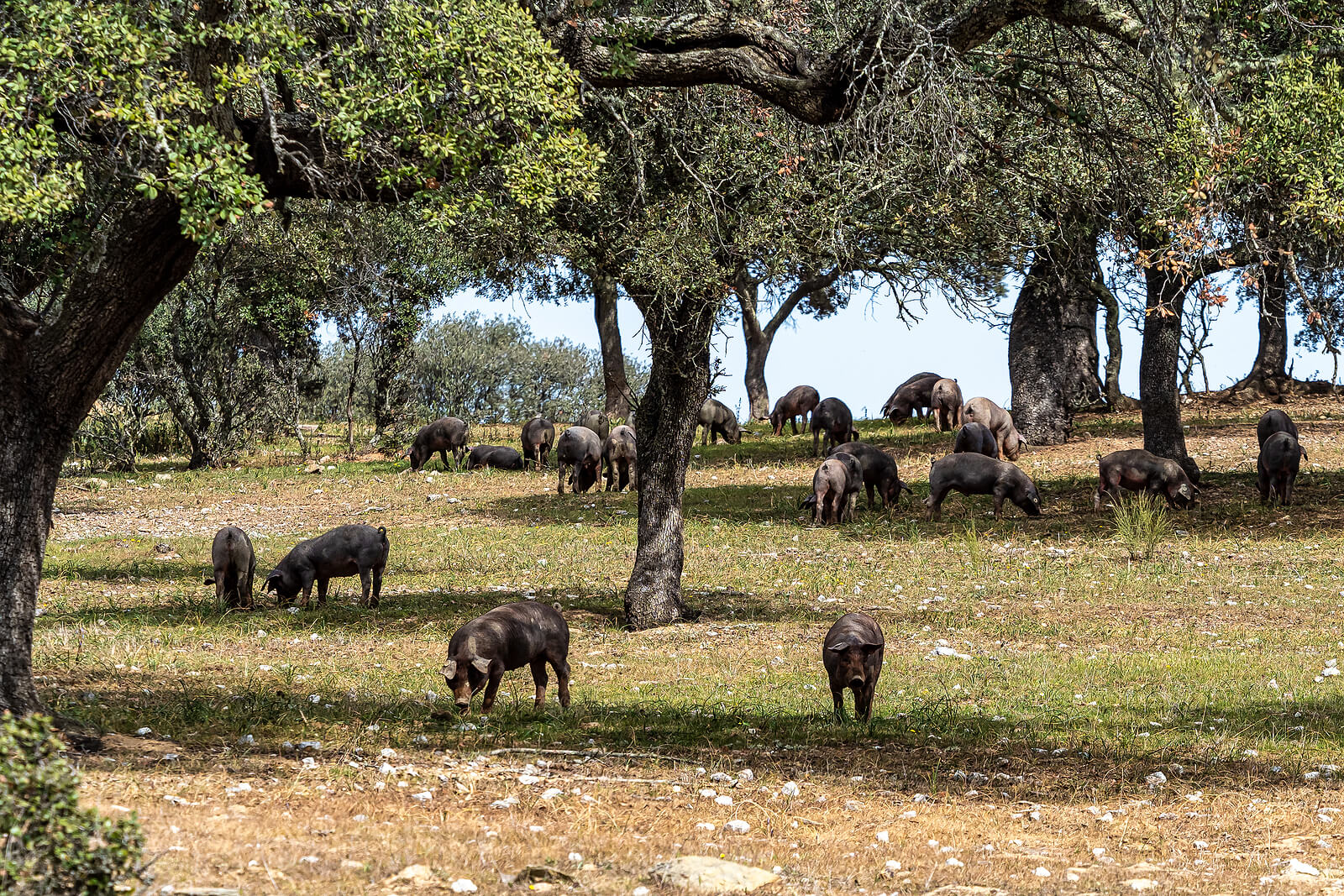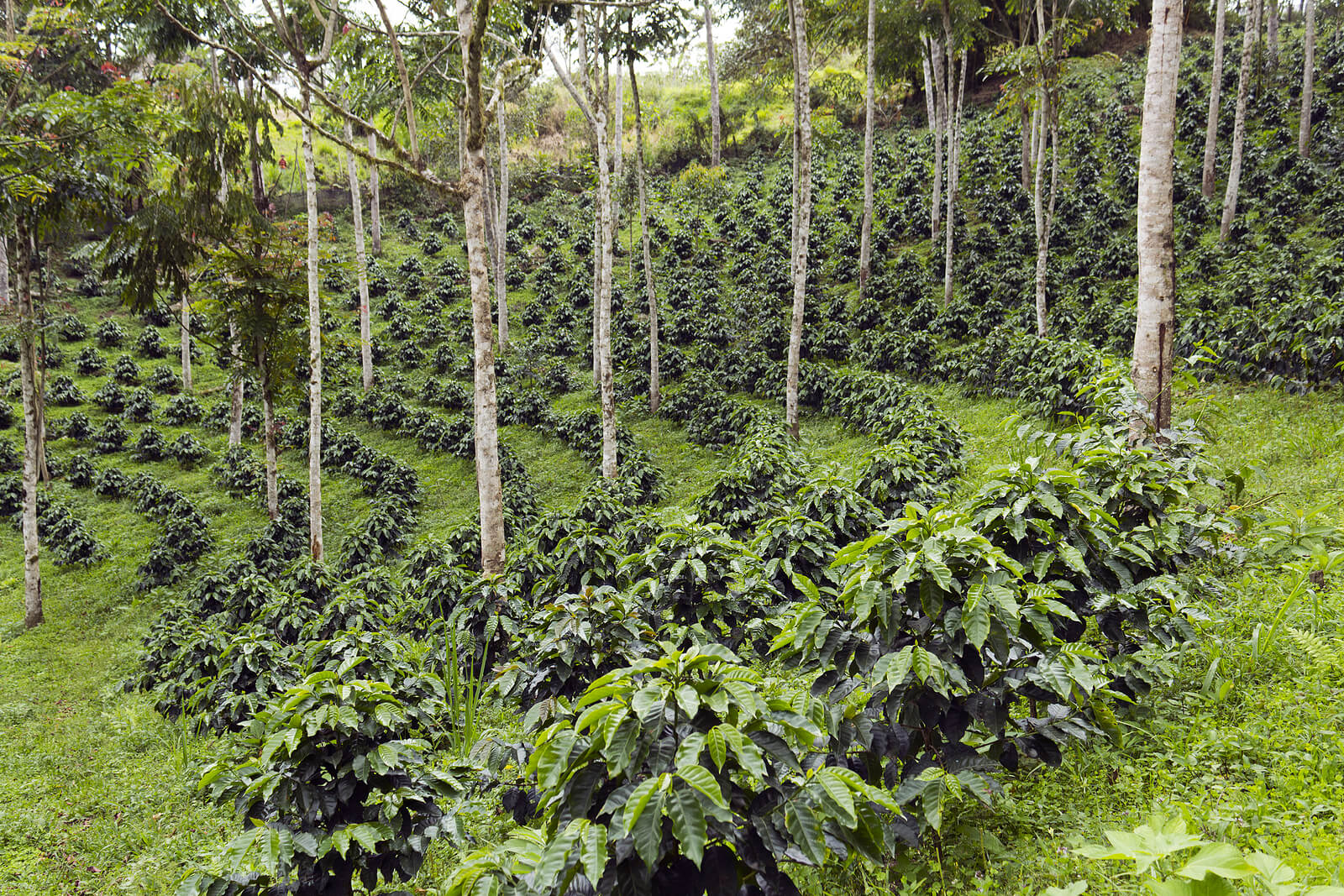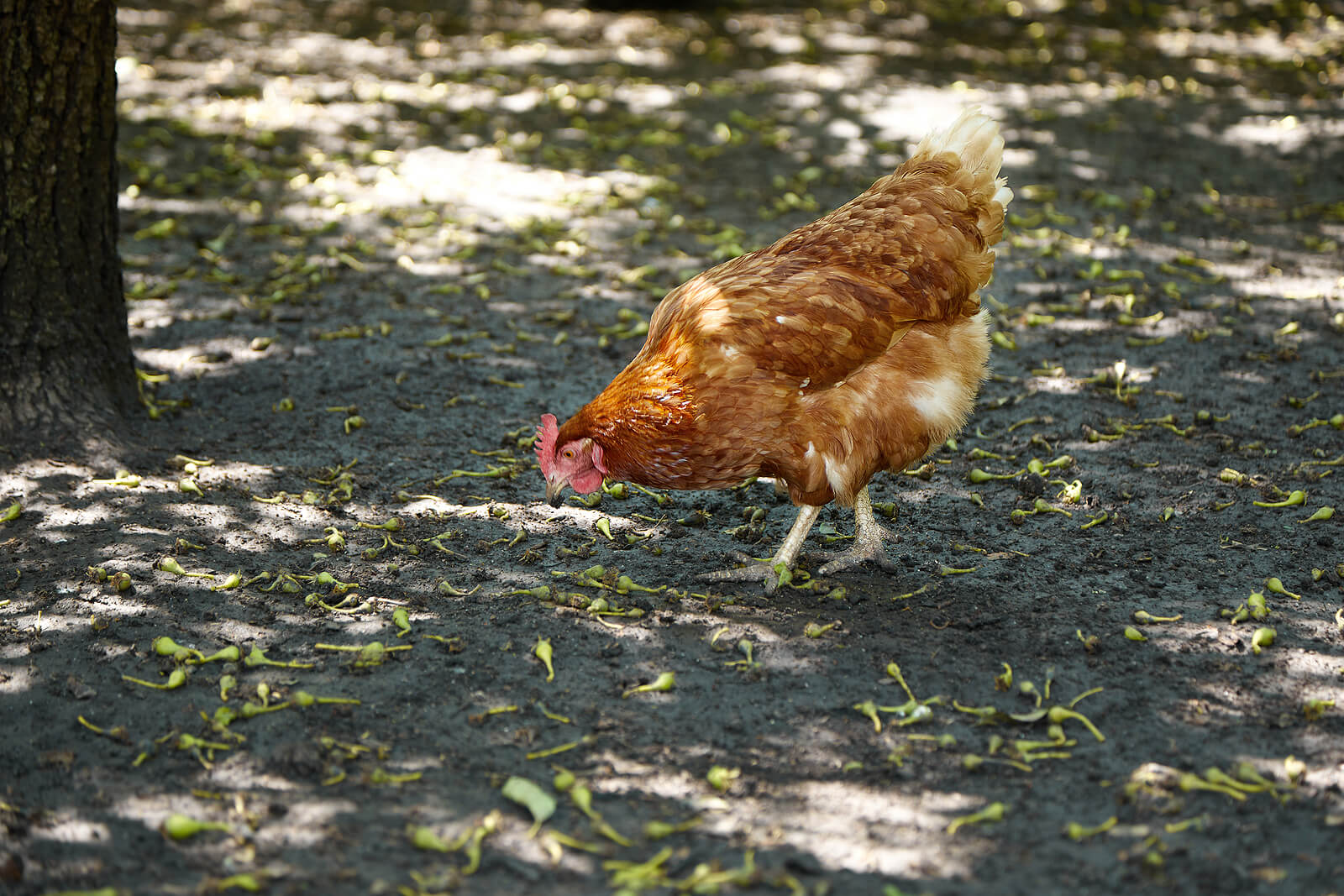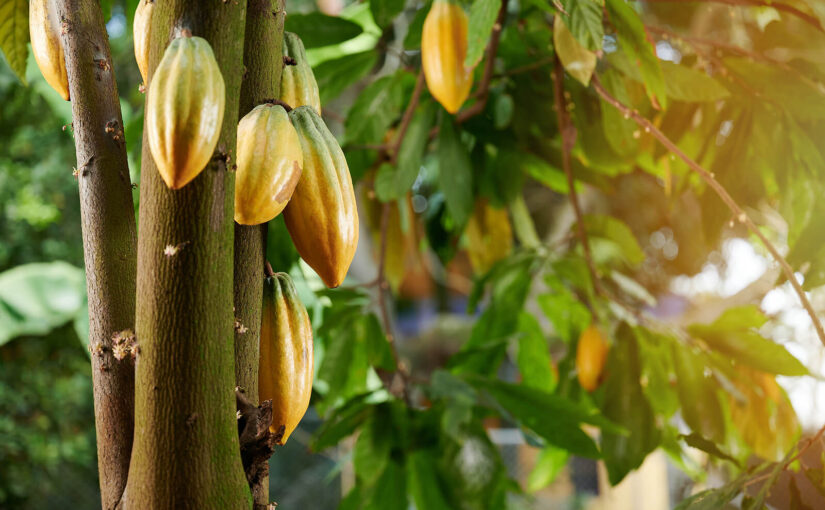Agroforestry has been happening since ancient times and is still widely practised worldwide by over 1.2 billion people on approximately 1 billion hectares of land.
However, this land management method has faced various barriers to widespread adoption in the UK. 72% of the country’s land is farmed, and just 3% is used for agroforestry systems.
Let’s explore agroforestry and how it works before diving into its advantages and drawbacks. Doing so will give us a comprehensive understanding of the practice and its potential for the UK and the environment.
What is agroforestry?
Agroforestry is a unique land management approach that harmoniously blends agriculture and tree planting within the same land area.
It stands apart from conventional forestry and agriculture practices by emphasising the symbiotic relationship between these two elements, ultimately striving to promote land conservation.
Within agroforestry, the agricultural aspect involves the cultivation of crops or the raising of livestock, allowing for a diverse and integrated system that maximises the potential of the land.
By combining these components, agroforestry fosters a sustainable and ecologically sound land use method.
Agroforestry systems and practices

The practice of agroforestry can be broken down into five distinct types:
- Silvopastoral agroforestry: A combination of trees and livestock. In Central America, silvopastoral systems span 2 million hectares. A European example is the renowned Spanish silvopastoral ‘dehesa’ system consisting of oak trees with livestock grazing underneath.
- Silvoarable agroforestry: Trees and crops are cleverly combined. One well-known example is cocoa agroforestry, where cocoa plants flourish in the shade of tree canopies. Globally, this system covers an impressive 7.8 million hectares of land.
- Forest farming: This type of agroforestry involves cultivation within a forest environment, using the natural ecosystem to grow various crops sustainably.
- Hedgerows and riparian buffer strips: Hedgerows and buffer strips are used as protective barriers, supporting biodiversity and ecological balance.
- Home gardens: As a small-scale application of agroforestry, home gardens showcase a combination of trees and crops, allowing for self-sufficiency and diverse food production.
In European Union countries like France and Spain, silvopastoral and silvoarable agroforestry practices have been deeply rooted for generations.
Meanwhile, traditional farm hedgerows in the UK are a prominent and visible example of agroforestry integrated into the British landscape.
The benefits of agroforestry
Agroforestry boasts many advantages, making it a desirable method that surpasses its alternatives in terms of productivity, economic stability, biodiversity, sustainability, and profitability.
Let’s dive deeper into the primary benefits it offers.
Productivity
Productivity flourishes in agroforestry systems, creating a wholesome environment that enhances soil, water, and air quality — leading to heightened output.
Under the cover of trees, fallen leaves enrich the soil, providing ideal conditions for crops to thrive and flourish.
Hens freely ranging in areas with 20% tree cover exhibit remarkable improvements in egg production, yielding higher-quality eggs with increased shell density. As a result, farmers can sell more eggs, minimise egg losses, and significantly increase their earnings.
In certain instances, agroforestry systems can boost productivity by an impressive 40% compared to conventional farming methods, further reinforcing the appeal and practicality of this sustainable approach.

Economic stability
Agroforestry contributes to enhanced economic stability for farmers by providing multiple sources of income, thereby mitigating risks associated with reliance on one revenue stream.
If there’s a temporary issue with the livestock in a silvopastoral system, the farmer can still count on income from their cultivated crops. Similarly, in a silvoarable system, a season with limited fruit production is less financially concerning when the farmer can harvest arable crops from the same land.
The diversification of crops enables farms to operate year-round, reducing the pressures of seasonal demands and ensuring a steady flow of income throughout the year.
Agroforestry is also pivotal in enhancing livelihoods in rural communities by boosting food security and nutrition levels, generating additional income streams, and ultimately helping to alleviate poverty.
Biodiversity
Agroforestry systems are naturally more diverse than monocultures of livestock and crops, and silvoarable systems substantially boost biodiversity.
Likewise, biodiversity flourishes within the extensive network of hedgerows stretching over half a million miles across the UK’s farmland and countryside, serving as crucial wildlife habitats.
Wildlife finds abundant resources like food and shelter within the hedgerows while also benefitting from the connected wildlife corridors — vital for the survival of rare species like the hazel dormouse.
A rich diversity of flora and fauna also finds sustenance and support within British hedgerows, contributing to the vibrant and thriving ecosystem they foster.
Animal welfare
Silvopastoral agroforestry and hedgerows significantly enhance animal welfare through various methods.
In silvopastoral agroforestry systems, a tree canopy provides livestock with natural shade during scorching summer months, shielding them from the sun’s intensity and offering relief from hot temperatures.
Similarly, the trees act as a barrier throughout the year, protecting the animals from harsh weather conditions like strong winds, rain, and snow.
Trees and hedgerows contribute to warming the ground in cooler weather, extending the grass-growing season. The extended availability of natural feed allows livestock to graze longer without additional supplements, promoting their health and vitality.
Fallen leaves and tree bark can also provide a nutritional boost to the animals’ diet. These natural supplements can improve the animals’ health and well-being and, in some cases, may even reduce the necessity for antibiotic use.

The ‘electric’ sheep study
In a study by Bangor University, innovative ‘electric’ sheep were deployed across fields in north Wales to evaluate the effectiveness of trees and shelter belts in safeguarding flocks from diverse weather conditions.
Dr Andy Smith, Senior Lecturer in Forestry at Bangor University’s School of Environment, Natural Resources & Geography, said:
“If it’s very cold, a sheep burns more energy to keep warm for survival, and it needs more food. Conversely, if it’s too hot, animals tend to eat less and seek shade to keep cool. Both situations affect weight gain and productivity because the energy that could go into growth is used to regulate metabolism instead.”
The study concluded that the presence of trees effectively regulates airflow and temperature, ensuring the stabilisation of livestock’s body temperature — even in adverse weather conditions.
This vital benefit assists in maintaining the animals’ productivity and facilitating consistent weight gain.
Water management
Water management significantly improves by implementing agroforestry methods, offering valuable, cost-effective flood mitigation solutions.
With accurate tree planting, agroforestry facilitates water retention and infiltration, effectively guiding water movement through the soil and eliminating the risk of harmful build-up.
Notably, the impact of farming on water flow is drastically reduced by adopting agroforestry practices.
This natural water management process yields an additional advantage, too. The extensive root systems of trees efficiently lift nutrients from deeper layers of the soil profile, bringing them closer to the surface where crops can readily access them — enhancing overall crop productivity and nourishment.
Climate change
Agroforestry is crucial in climate change mitigation due to its tree-planting component. Unlike crops alone, agroforestry areas effectively remove significant carbon from the atmosphere.
When strategically planted in arable settings, trees also contribute to a remarkable 65% reduction in soil erosion. This is particularly vital as soil erosion poses significant challenges in traditional farming, reducing land productivity, water pollution, heightened flood risks, and even desertification. All of this can have far-reaching impacts on the planet.
Another noteworthy benefit of agroforestry is its ability to reclaim old and disused lands, breathing new life into previously unproductive areas and enhancing overall sustainability.
The disadvantages of agroforestry
As with any approach, agroforestry has its fair share of disadvantages.
One notable drawback is the time it takes for trees to mature and fulfil their intended purpose. While crops may grow and yield results relatively quickly, trees require many years to reach their full potential and provide the desired benefits.
Finding the perfect balance between trees and crops can be challenging, too. When the combination is not carefully managed, trees may negatively impact crop output by competing with them for essential resources like light, water, and nutrients from the soil.
This delicate balance requires thorough research and, in some cases, trial and error to identify compatible combinations of forest and agricultural components.
Once the best combination is established, the presence of trees intermingled among crops can introduce challenges during harvesting. Frequently, crops may require manual harvesting, which is labour-intensive and time-consuming.
Finally, implementing an agroforestry system is more complex than conventional farming practices, demanding higher technical and scientific expertise.
Such systems’ successful design and management require a deeper understanding of ecological interactions and tree-crop dynamics.
Despite these drawbacks, with proper planning and management, agroforestry can offer numerous benefits to farmers, the land, and the planet, making it a valuable and sustainable option.
